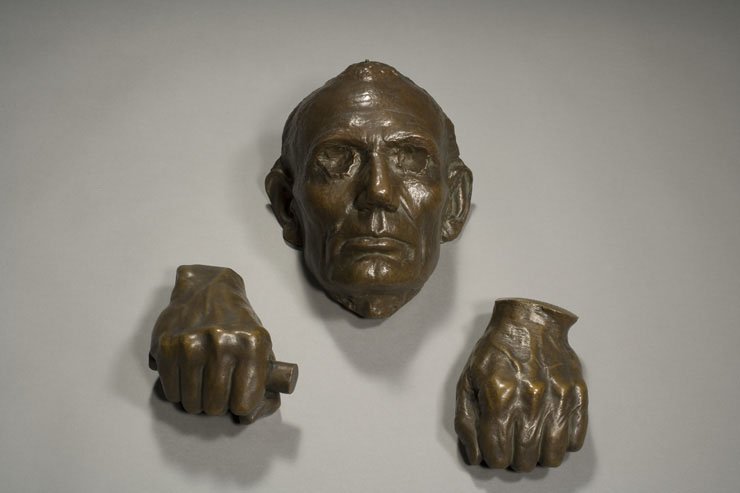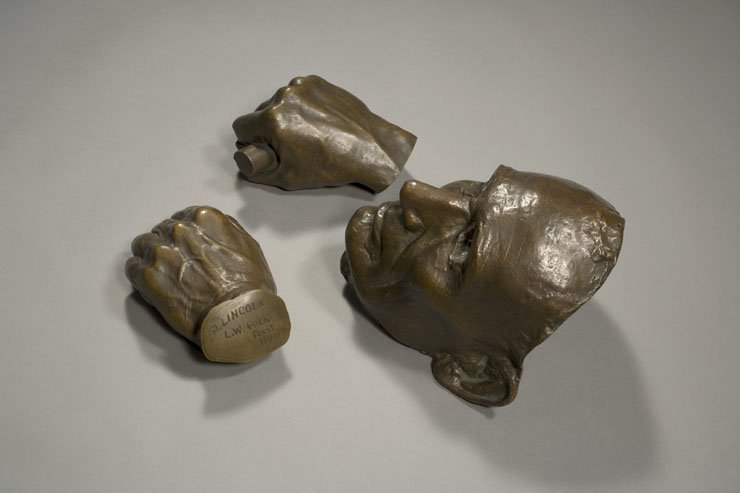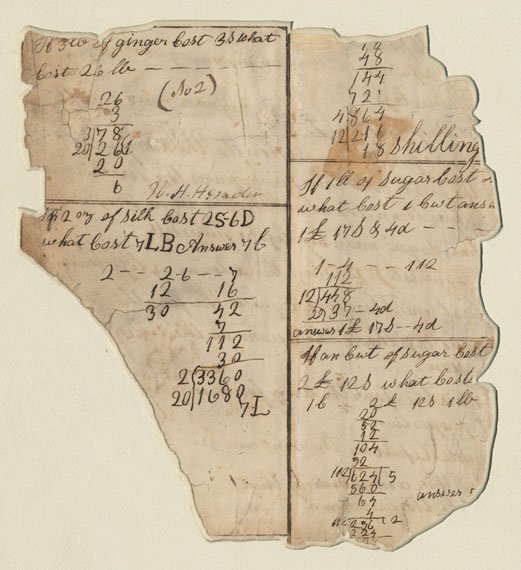Alcove Case 4

Leonard W. Volk. Metal casts from originals of 1860. Lincoln Collection. Artifacts
During a visit to Chicago in March 1860, Lincoln agreed to have plaster casts of his face and hands made by sculptor Leonard W. Volk. Lincoln later said that sitting quietly while the wet plaster slowly set on his face, all the while breathing through tubes in his nose, was “anything but agreeable.” But from the historian’s perspective the results were more than worth the discomfort. The casts of Lincoln’s angular face and massive hands preserve an indelible portrait of the prairie politician only a few weeks before his nomination in May 1860 as the Republican Party’s candidate for President.
Abraham Lincoln, 1824-1826. Lincoln Miscellaneous Manuscripts Collection
The earliest surviving sample of Lincoln’s handwriting is found in a boyhood “sum book” that he kept while he was intermittently attending local frontier schools in Perry County, Indiana. In 1866, Lincoln’s step-mother gave the sum book to his former law partner, William H. Herndon, and the volume was subsequently broken apart. Ten leaves from the sum book are known to survive in different institutions, including this example from the William E. Barton collection.
Thomas Lincoln. Lincoln Collection. Artifacts.
William E. Barton considered artifacts from Lincoln’s life to be an important part of his collection. These tools were once owned by Thomas Lincoln, Lincoln’s father, who was a lifelong farmer as well as a carpenter and furniture maker. Barton purchased the tools from Nancy A. Hall, great-granddaughter of Thomas Lincoln’s second wife, Sara Bush Lincoln. Nancy Hall testified to Barton that the tools “have been in our home all my life and . . . were the property of Thomas Lincoln, who died in our home in 1851, his widow dying in the same cabin in 1869.”





